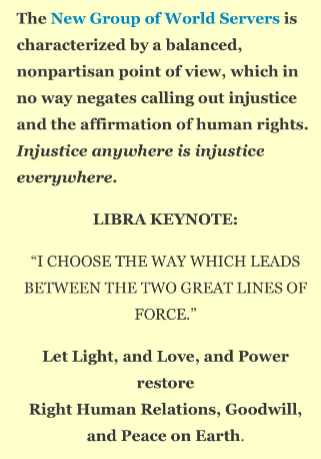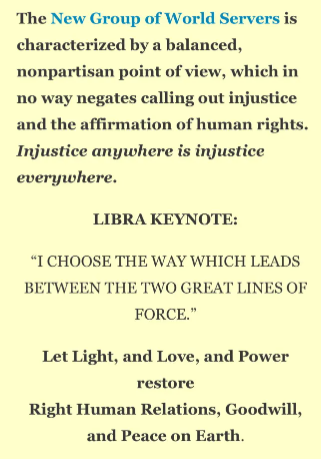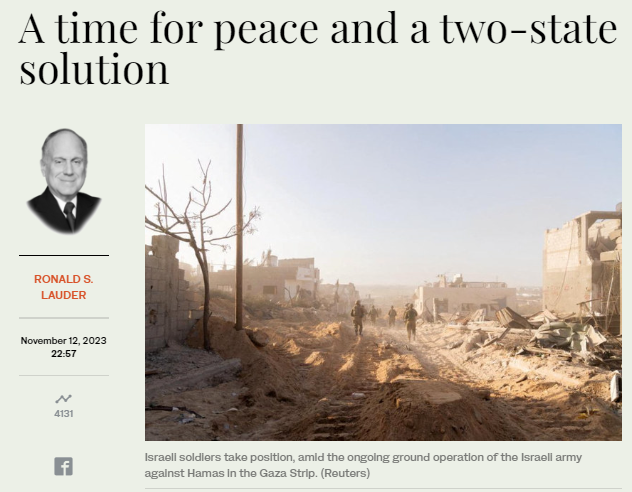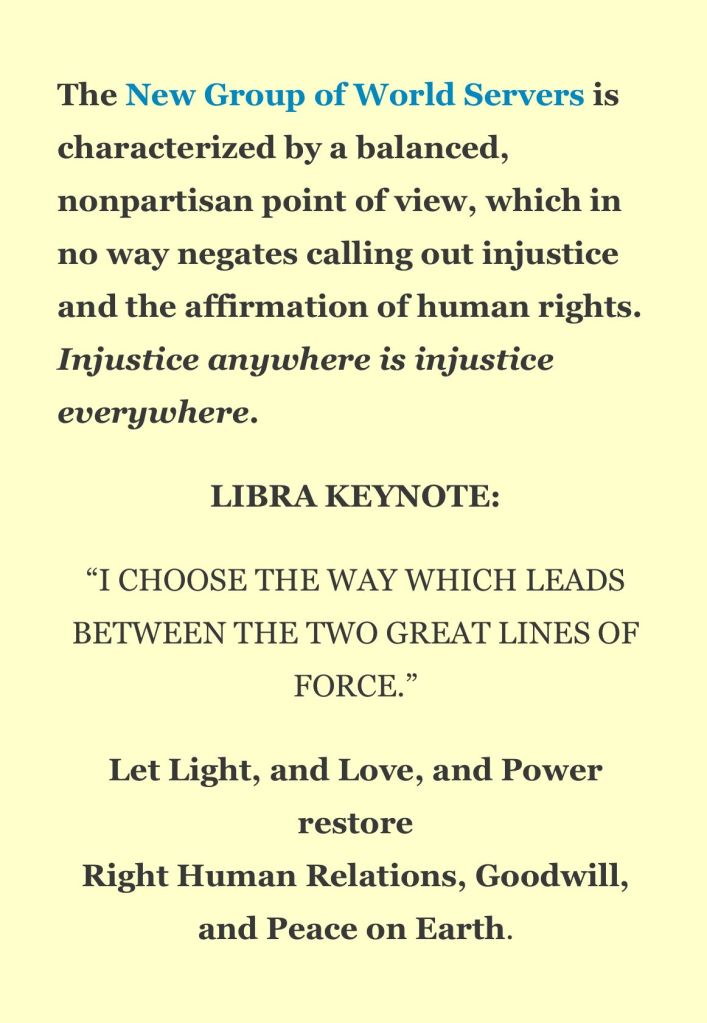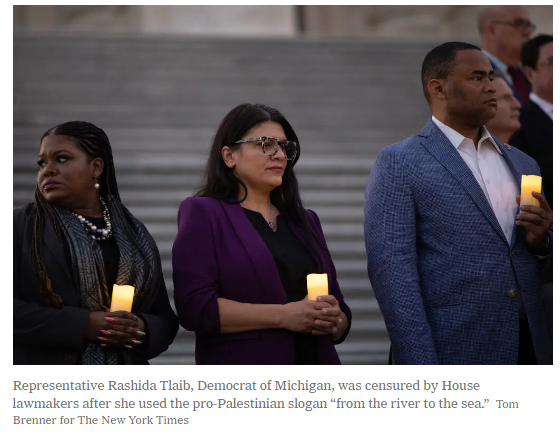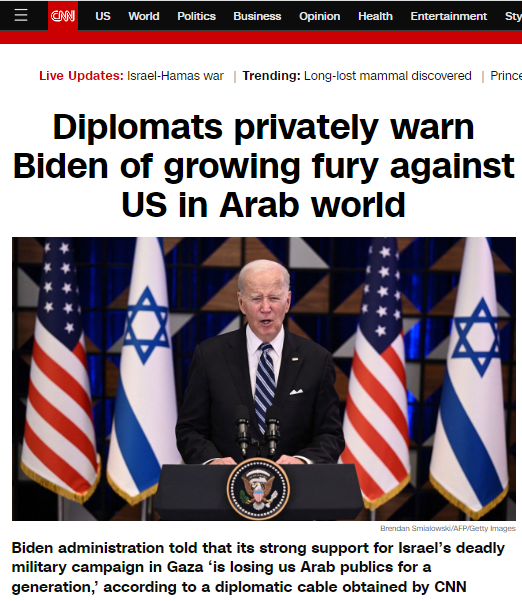Wars have been a tragic part of human history, often leading to immeasurable loss and pain. Amidst this chaos, the concept of goodwill — the desire to do good and foster mutual understanding — emerges as a beacon of hope. This essay explores the role of goodwill in times of war, its effectiveness in preventing wars, its powerlessness — by itself — once war breaks out, the importance of Assagioli’s four aspects of the will-to-good, and the transition back to the culture of goodwill in a postwar world.
Goodwill as a Deterrent to War
Goodwill is more than just a warm sentiment; it can be a powerful tool for preventing wars. When nations and individuals truly understand each other’s perspectives, respect each other’s rights, and are committed to peaceful coexistence, the likelihood of conflict drastically reduces. However, goodwill needs to be nurtured through diplomacy, cultural exchange, and education on the science of right human relations.
Goodwill Rendered Powerless in War
Once war breaks out between good and evil forces, as in the Second World War, goodwill is rendered powerless to defeat evil. It needs to be strengthened by the will-to-good during conflict. The fog of war can also smother the voices of reason and compassion, giving way to the destructive impulses of hate, fear, and vengeance. However, this does not mean that goodwill is irrelevant during war. On the contrary, it becomes even more critical to prevent the complete dehumanization of the enemy and to keep the possibility of peace alive. Even if the ideology of Nazism represented the forces of evil, as does the ideology of Zionism today, the German and Jewish people should be considered as victims of the war too, and should be approached in a spirit of goodwill.
The Will-to-Good in War
Roberto Assagioli, a pioneer of transpersonal psychology, identified four aspects of the will: strong will, skillful will, wise will, and transpersonal will. In the context of war, these aspects can be interpreted as follows:
- The strong will represents the determination to resist evil and uphold justice.
- The skillful will involves using strategy and intelligence to minimize harm and maximize effectiveness.
- The wise will is the commitment to act in a way that promotes understanding, reconciliation, and peace, conducting war in strict adherence of the ethical rules of war.
- The transpersonal will reflects the higher purpose or spiritual values that guide our actions and give them meaning. Invoking spiritual energies — coming from the planetary center where the will of God is known (Shamballa), as well from extraplanetary sources, such as the Lords of Liberation, the Avatar of Synthesis and the Spirit of Peace — is essential to strengthen goodwill in times of war.
These aspects are not mutually exclusive; they reinforce each other. For example, the strong will to resist evil must be guided by the skillful will to avoid unnecessary harm, the good will to foster understanding, and the transpersonal will to uphold our highest ideals.
Postwar Goodwill and Lasting Peace
The transition from war to peace is a delicate process. It requires more than just a cessation of hostilities; it needs a culture of goodwill to heal the wounds of war, reconcile former enemies, and build a lasting peace based on right human relations. This involves truth-telling, justice, reparations, and guarantees of non-repetition. However, the most crucial element is goodwill — the sincere desire to understand each other, learn from the past, and work together for a better future.
In conclusion, goodwill plays a vital role in times of war and peace. It can help prevent wars and mitigate their worst effects. However, it needs to be strengthened by the will-to-good during conflict to pave the way for lasting peace based on right human relations. Despite the challenges, we must strive to cultivate and express goodwill, as appropriate to the circumstances.
The unconquerable nature of goodness and the inevitability of the ultimate triumph of good
The distinction between desire and will
The only factor which can successfully oppose desire is Will, using the word in its spiritual connotation and as an expression of the first great divine aspect. There has been but little of that organized, spiritual will shown by the United Nations; the Allies are animated naturally by desire for victory, desire for the arrival of the end of this all-engulfing world cataclysm, by desire for peace and the return of stability, the desire to end war once and for all and to break its constantly recurring cycle, and a steadily mounting desire to bring to a finish the terrible toll of suffering, of cruelty, of death, of starvation and of fear which is gripping humanity by the throat in the attempt to strangle out its life.
But all this determination is in most cases simply the expression of a fixed and united desire. It is not the organized use of the will. The secret of the will lies in the recognition of the divine nature of man. Only this can evoke the true expression of the will. It has in fact to be evoked by the soul, as it dominates the human mind and controls the [Page 343] personality. The secret of the will is also closely tied in with the recognition of the unconquerable nature of goodness and the inevitability of the ultimate triumph of good. This is not determination; it is not whipping up and stimulating desire so that it can be transmuted into will; it is not an implacable, unshakable, immovable focusing of all energies in the need to triumph (the enemies of the Forces of Light are adept at that). Victory for the United Nations does not lie in the effort to produce this focusing with better effect than the enemy. The use of the will is not expressed by an iron fixation to stand steady and not yield to evil forces. Determination, the focusing of energy and the demonstration of an all-out effort towards victory are only (where the United Nations are concerned) the expression of a one-pointed desire for peace and for an ending of the trouble. This type of effort is something which the masses can give, and which they do give on both sides in this conflict.
There is, however, a plus, a something else, which will swing the tide of victory on to the side of the United Nations. This will come through the effort to understand and express the quality of spiritual Will; it will be the manifestation of that energy which makes the first divine aspect of Will or Power what it is; it is that which is the distinctive feature of the Shamballa force; it is that peculiar and distinctive quality of divinity which is so different that even Christ Himself was unable to express it with facility and understanding. Hence we have the episode in Gethsemane. It is not easy for me to express its significance in words. Two thousand years have gone since Gethsemane and since Christ made His initial contact with the Shamballa force, and by this means and on behalf of humanity established a relationship which even after two thousand years is but a thin, frail line of connecting energy.
This Will force is nevertheless available for right usage, but the power to express it lies in its understanding (as far as may be possible at this midway point in human evolution), and in its group use. It is a unifying, synthetic force, but can be used as a regimenting, standardizing force. May [Page 344] I repeat those two key words to the use of this Shamballa energy: Group Use and Understanding.
Source: The Externalisation of the Hierarchy (quoted text written in April, 1942)
The passage emphasizes the distinction between desire and will, particularly in the context of spiritual connotation and as an expression of divine aspect. The United Nations and the Allies’ determination to end war and suffering is seen as a united desire rather than an organized use of will. The secret to understanding and wielding this will lies in recognizing the divine nature of man and the unconquerable nature of goodness.
While the desire for peace and an end to conflict is a powerful motivator, it is not the same as the spiritual will. The spiritual will is not about an inflexible determination to resist evil forces, but rather, it’s about understanding and expressing the quality of spiritual will, which is the manifestation of divine power.
This spiritual will is described as a unifying, synthetic force that can be used for regimenting and standardizing. It’s also available for right usage, but the ability to express it depends on understanding it and using it as a group. This force was first established by Christ in Gethsemane, and even after two thousand years, the connection to this force remains thin and frail.
The passage concludes by emphasizing the importance of group use and understanding in harnessing this Shamballa energy, a distinctive feature of divine will or power.
The complexities of understanding Love and Will
Mankind has had much difficulty in comprehending the significance of Love. If that is so, the problem in relation to the Will will naturally be still more difficult. For the vast majority of men, true love is still only a theory. Love (as we usually interpret it) works out as kindness, but it is kindness to the form side of life, to the personalities of those around us, and fulfils itself usually in a desire to carry out our obligations and not to obstruct in any way those activities and relationships which tend to the well-being of our fellowmen. It expresses itself in a desire to end abuses and to bring about happier, material world conditions; it shows itself in mother love, in love among friends, but seldom as yet in love among groups and nations. It is the theme of the Christian teaching, just as Will, divinely expressed, will be the theme of the coming world religion, and has been the impulse lying behind much of the good work done in the fields of philanthropy and human welfare, but factually, true love has never yet been expressed—except by the Christ.
You might ask why, if this is so, do you emphasize this highest aspect? Why not wait until we know more about Love and how to manifest it in our environment? Because, in its true expression, the Will today is needed as a propelling, expulsive force, and also as a clarifying, purifying agent.
The Shamballa energy is therefore that which is related to the livingness (through consciousness and form) of humanity; we need not consider its relation to the rest of the manifested world; it concerns the establishing of right human relations and is that condition of being which eventually negates the power of death. It is therefore incentive and not impulse; it is realized purpose and not the expression of desire. Desire works from and through the material form upwards; Will works downwards into form, bending form consciously to divine purpose. The one is invocative and the other is evocative. Desire, when massed and focused, can invoke will; will, when evoked, ends desire [Page 345] and becomes an immanent, propulsive, driving force, stabilizing, clarifying, and finally destroying. It is much more than this, but this is all that man can grasp at this time and all for which he has, as yet, the mechanism of comprehension. It is this Will—aroused by invocation—which must be focused in the light of the soul and dedicated to the purposes of light, and for the purpose of establishing right human relations; it must be used (in love) to destroy all that is hindering the free flow of human life and which is bringing death (spiritual and real) to humanity. This Will must be invoked and evoked.
Source: The Externalisation of the Hierarchy (quoted text written in April, 1942)
This passage considers the complexities of understanding Love and Will, particularly in a spiritual context. It suggests that most people only understand love as kindness towards others’ physical forms and personalities, rather than a deeper, more spiritual concept. This limited understanding of love often manifests as a desire to improve material conditions, which can be seen in acts of philanthropy or human welfare. However, the passage argues that true love has only been fully expressed by Christ.
The text then explores why the focus should shift towards understanding the Will, despite our limited grasp of Love. The Will is described as a powerful force needed today for propulsion and purification. It is linked to the Shamballa energy, which is related to the consciousness and form of humanity, and aims to establish right human relations while negating the power of death.
The passage distinguishes between Desire, which works from the material form upwards, and Will, which works downwards into form with a conscious divine purpose. Desire can invoke will when focused, but will, once evoked, ends desire and becomes a driving force that stabilizes, clarifies, and destroys.
The text concludes by emphasizing the need to invoke and evoke this Will, focusing it in the light of the soul for the purpose of establishing right human relations. It must be used in love to destroy anything hindering the free flow of human life and causing spiritual and real death to humanity. While the concept of Will is much more profound, the passage acknowledges that this is all humans can comprehend at this time.
Two significant obstacles preventing the genuine expression of the Will force
There are two great handicaps to the free expression of the Will force in its true nature. One is the sensitivity of the lower nature to its impact, and its consequent prostitution to selfish ends, as in the case of the sensitive, negative German people and its use by the Axis nations for material objectives. The second is the blocking, hindering, muddled but massed opposition of the well-meaning people of the world who talk vaguely and beautifully about love but refuse to consider the techniques of the Will of God in operation. According to them, that Will is something with which they will personally have naught to do; they refuse to recognize that God works out His Will through men, just as He is ever seeking to express His Love through men; they will not believe that that Will could possibly express itself through the destruction of evil with all the material consequences of that evil. They cannot believe that a God of Love could possibly employ the first divine aspect to destroy the forms which are obstructing the free play of the divine Spirit; that Will must not infringe upon their interpretation of Love. Such people are individually of small moment and of no importance, but their massed negativity is a real detriment to the ending of this war, just as the massed negativity of the German people, and their inability to take right action when Hitler’s purposes were disclosed, made possible the great inflow of ancient and focused evil which has brought the present catastrophe to man. Such people are like a millstone around the neck of humanity, crippling true effort, murmuring, [Page 346] “Let us love God and each other,” but doing nothing but murmur prayers and platitudes whilst humanity is dying.
You can easily appreciate the fact that the evocation of the energy of the Will and its effect upon the unprepared, materialistically minded person might and would prove a disaster. It would simply serve to focus and strengthen the lower self-will, which is the name we give to realized and determined desire. It could then create such a driving force, directed to selfish ends, that the person might become a monster of wickedness. In the history of the race, one or two advanced personalities have done this with dire results, both to themselves and to the people of their time. One such figure in ancient times was Nero; the modern example is Hitler. What, however, has made the latter so dangerously an enemy of the human family is that during the last two thousand years mankind has advanced to a point where it can also be responsive to certain aspects of this first ray force. Hitler therefore found associates and cooperators who added their receptivity to his so that an entire group became the responsive agents of the destructive energy, expressing itself in its lowest aspect. This is what has enabled them to work ruthlessly, powerfully, selfishly, cruelly, and successfully, at the destruction of all that attempted to impede their projects and desires.
There is only one way in which this focused evil will which is responsive to the Shamballa force can be overcome, and that is by the opposition of an equally focused spiritual Will, displayed by responsive men and women of goodwill who can train themselves to be sensitive to this type of new incoming energy and can learn how to invoke and evoke it.
You can consequently see why there was more than the casual use of a current word in my mind when I talked to all of you in terms of goodwill and of the will-to-good. All the time I had in my thoughts not just kindness and good intention, but the focused will-to-good which can and must evoke the Shamballa energy, and use it for the arresting of the forces of evil.
Source: The Externalisation of the Hierarchy (quoted text written in April, 1942)
There are two significant obstacles preventing the genuine expression of the Will force. The first obstacle is the susceptibility of the lower nature to this force which can lead to its misuse for selfish purposes, as demonstrated by the Axis nations during World War II. The second obstacle is the collective opposition of well-meaning individuals who speak about love but refuse to acknowledge the operational techniques of God’s Will.
The passage asserts that these individuals fail to recognize that God expresses His Love and Will through humans and that this Will could manifest itself in the destruction of evil, even with its material consequences. This group’s mass negativity is seen as a substantial hindrance to ending world conflicts.
The text further explains that invoking the energy of Will on an unprepared, materially-inclined individual could result in disaster, as it might merely enhance their lower self-will or desire, turning them into “monsters of wickedness”. Examples of such personalities from history include Nero and Hitler. What made figures like Hitler particularly dangerous is their ability to find cooperators who were also receptive to this destructive energy, enabling them to ruthlessly eliminate anything that stood in their way.
The passage concludes by emphasizing that the only way to counteract such focused evil will is through an equally focused spiritual Will, embodied by responsive men and women of goodwill who can train themselves to be sensitive to this new incoming energy and learn how to invoke and evoke it. This is not just about kindness and good intention, but about the focused will-to-good that can invoke the Shamballa energy and use it to counteract the forces of evil.









